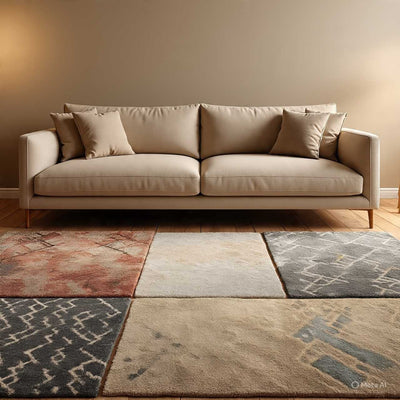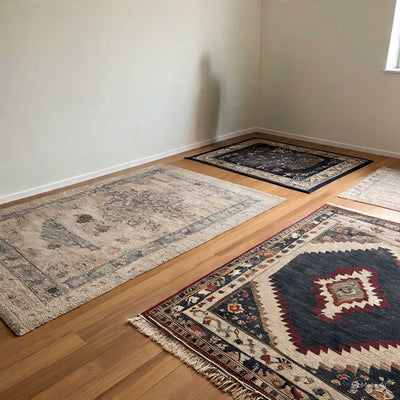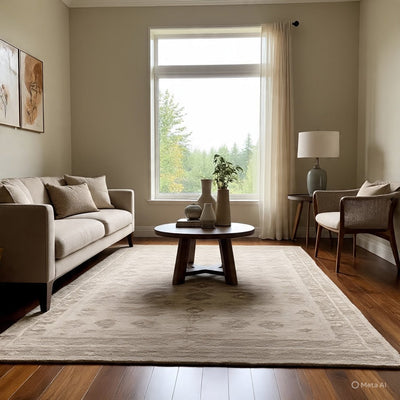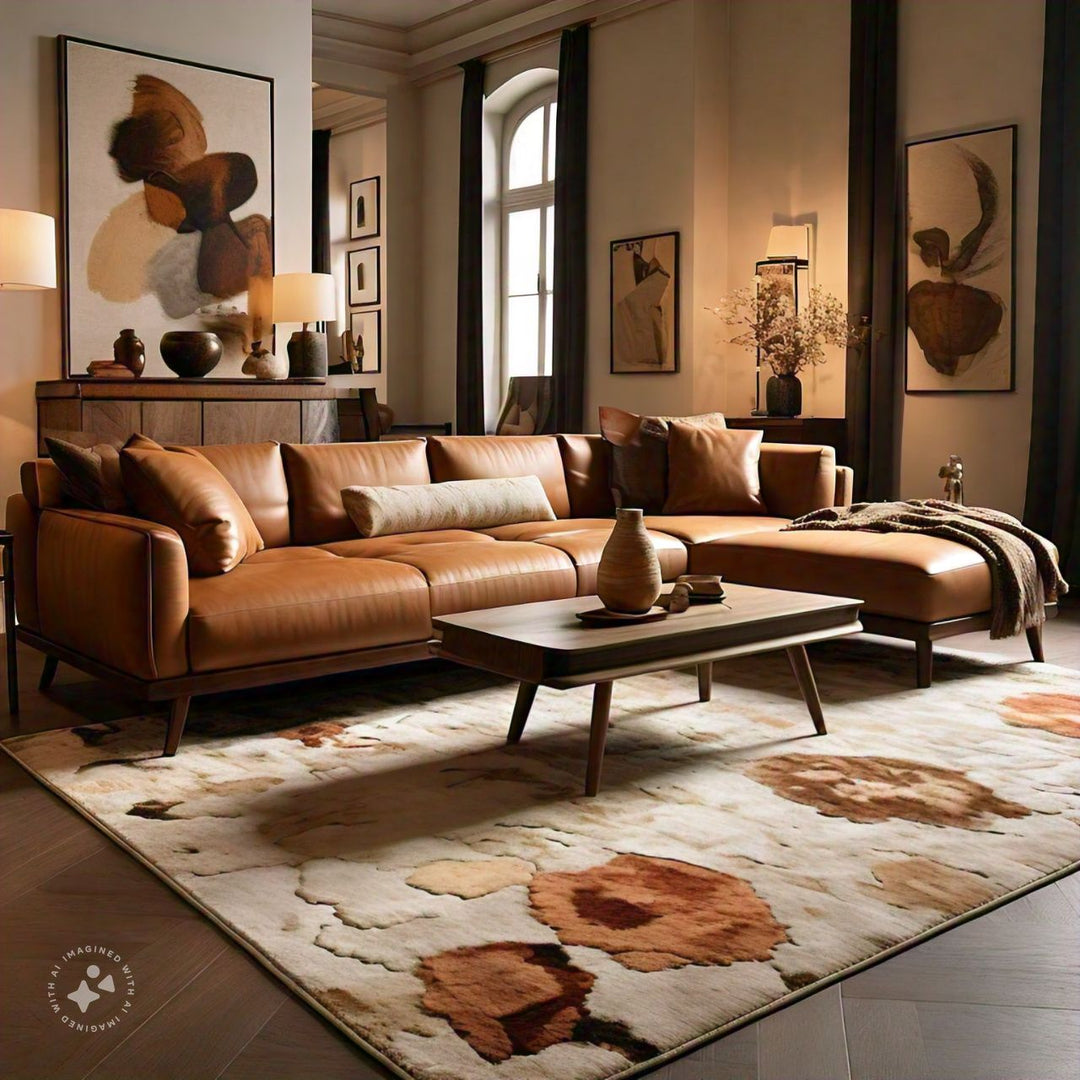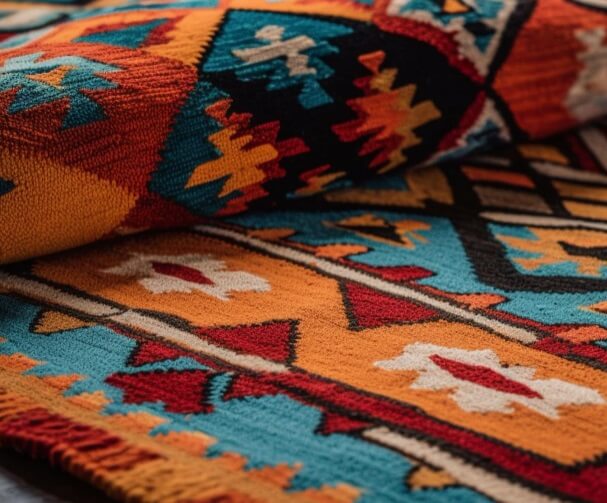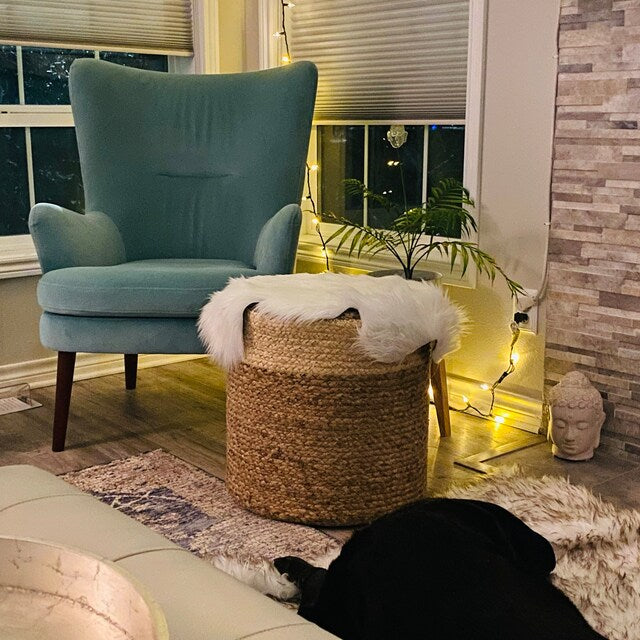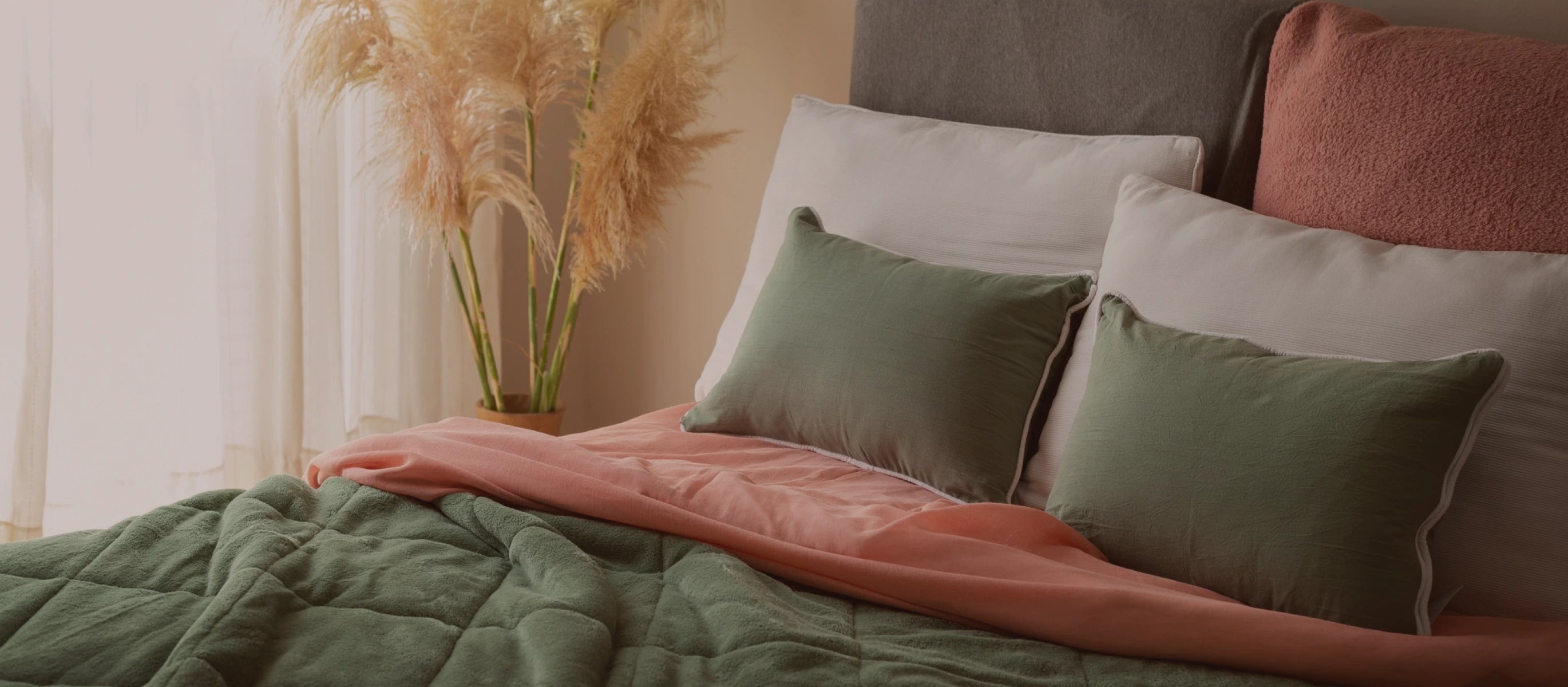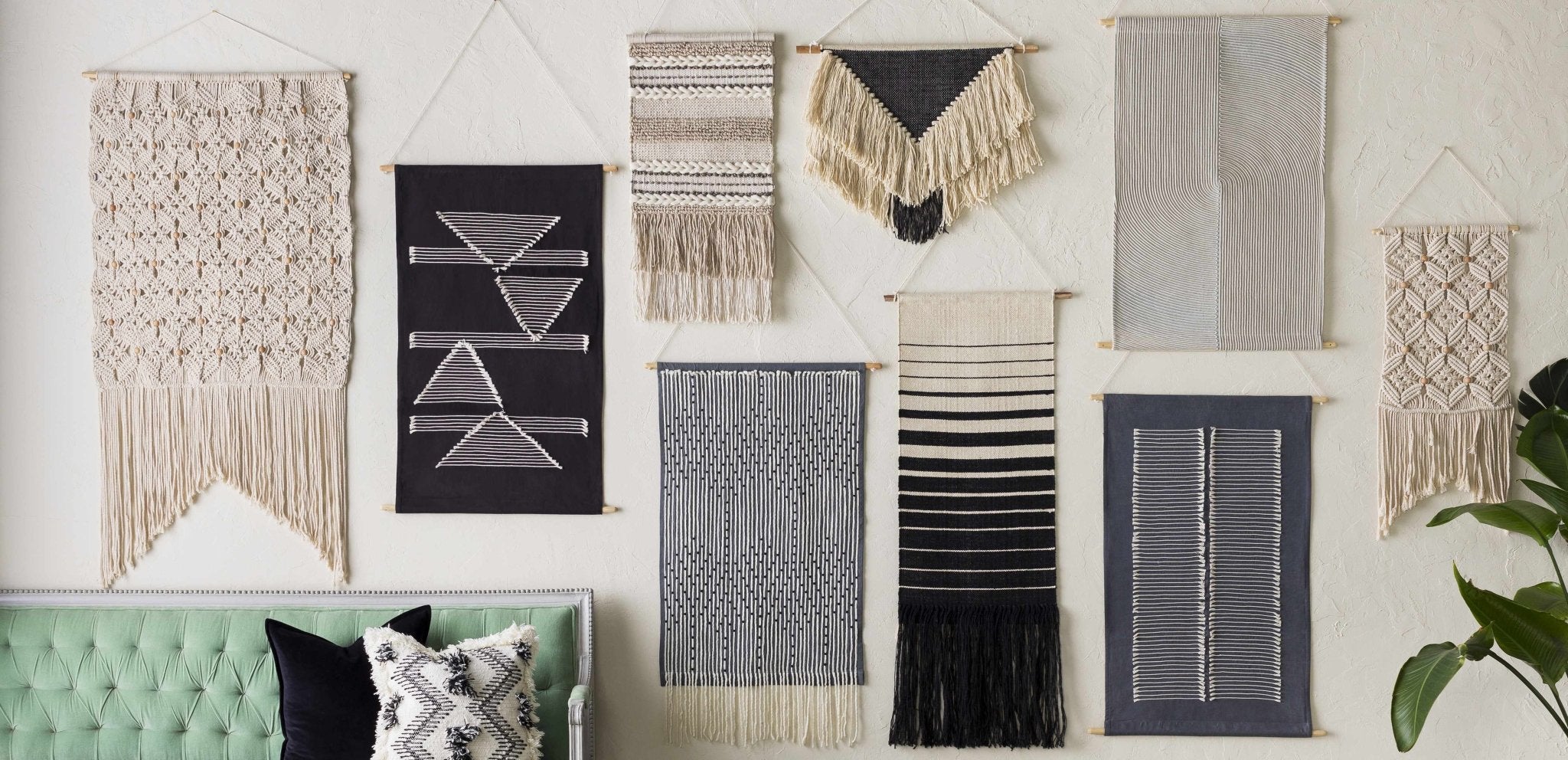Types of Rug Weaves: Know About These Before Buying One
When designing a room, there are many things that you must consider. The tone of the room is influenced by the furniture, décor, and color of the walls. It's also crucial to consider the rug's construction while choosing one for your house. It can be easier to select a rug that is ideal for your lifestyle if you are aware of how it is created. This post will highlight the history of rug weaving, and the various types of rug weaves.
While experts understand the intricacy of different rug weaves, materials, and construction of rugs, a lot of others are still unaware of the details. You are at the right place if you are from the second category. Purchasing a designer rug is similar to purchasing a priceless work of art that required attention, effort, and time to create.
Therefore, it's crucial to consider the weaving method when purchasing designer rugs. It is essential to assuring the caliber of these rugs and how the floor covering harmonizes with the space surrounding it.
Explanation of rug weaves history and their importance
The practice of rug weaving has often been considered generational and a skill that involves various cultures. Although pile carpets aren't specifically mentioned in ancient texts or classical writings, the art of weaving is.
As per sources, flat weaving was developed over 4000 years ago, thanks to remnants discovered in ancient Egyptian and Mesopotamian tombs. Other evidence indicates that pile rug weaving predated 2000 BC in the Middle East and other regions of central, northwest, and eastern Asia.
The Pazyryk hand-knotted Rug is thought to be the world's oldest pile rug. The first pieces of pile rugs from ancient times were discovered earlier, in the Tarim Basin in East Turkmenistan. Parts of western China, Uzbekistan, southern Russia, northwest India, Mongolia, Kirgizstan, and eastern Turkmenistan, are included in this region.
Sometime after 1000 AD, pile rug weaving became an established craft in Europe, most likely in Spain due to that country's proximity to Egypt, Iran, and Mesopotamia.
The technique of creating different types of rug weaves was quickly copied by other European nations, and by the 20th century, practically the entire continent of Europe was engaged in rug weaving. However, even though Europe produced its rugs, we can still tell from old paintings that the vast majority of the rugs shown there appear to be of the Persian or Anatolian varieties.
Rug weaving never gained the same prominence in Europe as it did in Asia, and as a result, many Asian countries over time developed sizable rug-exporting enterprises. Learn about different weave terms on our rug glossary page.
Various types of weaving techniques
Hand-knotted
Around the world, hand-knotted rugs rank among the most valuable and expensive. Customers have chosen them to express their refined taste and love of art. These rugs are weaved by skilled artisans who dedicate hours of their time, day in and day out, to create a product that will be appreciated for many years.
These rugs are created by attaching thousands of individual knots to a base. The rug is then trimmed to the desired pile size after the knotting is complete. There is a distinct front and back side to these rugs.
In contrast to the back, which has a knotted surface, the front has a plush appearance and a soft feel. The best hand-knotted rugs are made in Afghanistan, China, India, Iran, Pakistan, Russian Federation, Romania, and Turkey.
The fundamental element that establishes the framework for a rug of outstanding quality is the quality of the wool utilized. The craftsmanship, creativity, and quantity of knots all come together to create a work of art that should be treasured. According to the many varieties of hand-knotted rugs, the wool's density and ply of the yarn used to make it vary.
Buy Now This Hand-Knotted Colorful Heriz Area Rug
Additionally, with hand-knotted rugs, the fringe is produced naturally rather than being simply sewn on because each knot is attached to a warp thread. There are never two similar rugs. As a result, if you buy one of these works, it is unique.
Its method of printing—knot by knot, line by line, paying attention to every minute detail—gives it distinctiveness. Depending on the type of carpet being woven, the procedure can take as little as two months or as long as almost a year.
It won't be available in numerous sizes, unlike machine-made rugs, and you can't buy it in the same size as well. These rugs were meticulously made by artisans; thus, they are not flawless or perfect. Making these rugs requires a lot of skill and effort. Natural materials, such as cotton, silk, and wool, are used instead of synthetic ones.
These rugs are classic and get better with time. They offer beauty to any space and rise in value with age. Compared to synthetic rugs, their upkeep, and cleaning are simpler. The strength and tenacity are unmatched.
Hand-knotted rugs are frequently quite plush. Additionally, they are strong, with the strength increasing with the knots per square inch. In actuality, the number of knots and length of time required to manufacture the rug dictate its price in most cases. Read the hand-knotted rugs blog to know more.
Hand-tufted
For those seeking an inexpensive solution, a hand-tufted rug is another excellent choice. Due to the presence of a back layer, hand-tufted rugs differ differently from flatweaves. Hand-tufted carpets do shed a little bit, so make sure you frequently vacuum them.
Related: A guide to Hand-tufted Rugs
Rugs made by hand-tufting have no knots in them. Instead, wool strands are fired through a canvas using a tufting gun. A hand-tufted rug develops faster than a hand-knotted carpet. As a result, production costs are significantly decreased. Hand-tufted rugs are hence reasonably priced
Hand-tufted carpets come in a variety of patterns and designs, giving customers more alternatives. Modern, Persian, contemporary, and printed tufted rugs are among the available styles.
Of all the different varieties of rugs, hand-tufted wool rugs are by far the most common and often manufactured. Wool, semi-worsted wool, and Indian wool are the main materials used in weaving. Silk, jute, viscose, bamboo silk, and others are some of the various rug fibers.
This rug was created using a tufting gun and a combination of manual and machine labor. A huge canvas or cotton fabric is stretched firmly and attached to a metal frame. On each of the four sides of the frame, there are rows of needle-like teeth. A restricted canvas on the frame makes tufting simpler and produces sharp designs.
Shop Now This Hand Tufted Wool Area Rug
The desired pattern is first sketched on a huge transparent piece of paper before being woven. The paper has a butter paper appearance. The paper's designs have been painstakingly poked with tiny holes. After that, it is put on the canvas. Blue ink is then applied to a cloth, which is subsequently rubbed over the paper. By doing this, the pattern is transferred from the paper to the canvas.
The rug is now being created. The weaving equipment known as a "tufting gun" is filled with colored wool or silk. A semiotic tool that utilizes human hands is the tugging gun. The construction is made less expensive and labor-intensive thanks to this instrument.
Where loops of wool are seen at the canvas backing, wool is fired through the canvas. The rug's framework is made of canvas. Compared to knotted carpets, this is fundamental. The weavers are guided through the procedure by the blue ink lines on the canvas.
The canvas is then taken out of the frame and washed once the entire design has been looped on it. The carpet becomes more lustrous and shiny after washing.
The protective layer is then added to the looped canvas. This is crucial because it prevents the pile from separating from the rug. Without two layers of latex, a hand-tufted rug is never finished.
The next stage is to lay down a layer of "scrim," a rubber grid. Another coat of latex adhesive is then placed on top of it. The canvas and wool adhere better to one another thanks to the glue.
Since the punchers for hand-tufted rugs use their hands to control the machine, they may be termed handcrafted. However, they are not always made of natural materials, unlike hand-knotted rugs. The rug's fringe is also sewn or glued on.
Flatweave
A flatweave rug is made using a weaving technique that involves wrapping warp thread pairs with wool (or the material of choice). When complete, these fibers cover the whole surface of the rug.
Unlike the typical backing or pile, you would find on other rugs, the backing is made by weaving threads on a loom, so the pattern is typically reversible on both sides. A rug created entirely without any knots is what constitutes a flatweave rug in the real sense of the term.
Although looms are used in the production of these rugs, they are handmade. The rug's entire surface is made up of the warp that runs its full length and the weft that runs its entire width. Modern and stylish styles are frequently the ultimate result. These rugs can be made in a variety of ways, including chain stitch, needlepoint, hooked, and more.
Flat-woven rugs are portable and lightweight. They are frequently more affordable than pile carpets. Such carpets have no backing, so it's preferable to put a nonslip mat underneath them. These rugs are great for kids and pets because they are simple to clean.
The flatweave is one of the most widely used rugs weaves out of all the others. The thinness of the flat weave gives it its name. Because flatwoven rugs are thin, it's crucial to place a rug pad underneath them. As a result, the rug won't slide. This choice lacks a pile and is frequently reversible. Since there is no backing on this rug weave, spills won't seep in and adhere to the fibers.
Power-loomed
Rugs manufactured by machines are woven on power looms that can be run by a hand, machine, or computer, hence the alternative name "power loomed." After choosing the design and color scheme, a computer card is made that instructs the machine to generate a rug in the specified size and color.
A jute or occasionally cotton warp is used to string the loom. Wool, nylon, polypropylene, olefin, or any suitable yarn is then used to weave the rug. Common synthetic materials include nylon, which is typically less robust, polypropylene, which tends to flatten more easily, and olefin, which is strong but, when heated, is not as lustrous as many others.
Three main categories of Oriental reproductions are produced on two different types of looms: the Wilton, the Cross-woven Wilton, and the Axminster.
The most popular rug weave in the American market is one made by machines. These power-loomed rugs are inexpensive and very long-lasting. Power-woven carpets are ideal for high-traffic spaces because they are often produced with synthetic materials.
Because they are so simple to clean and stain-resistant, these rugs are very popular. Power-loomed rugs have an optimum lifespan for high-use, low-cost area rugs of five years or more with adequate care.
Related: Machine Made vs Hand Made Rugs
Handloom
Hand-loomed rugs undergo a very unique weaving process. Traditionally, these rugs are weaved on a vertical loom with a mounted wrap. They frequently lack proper fastened ends or sides and fringes. They are created by utilizing tiny threading to force fiber strands together. The primary types of hand-loomed rugs include single-back, double-back, and loom-knotted-back ones.
The predominant textile utilized in the wrap is cotton. It is affordable and readily available in large quantities. Silk wraps just as effectively. Wrapping the carpet in polyester fibers makes outdoor handloom rugs more resistant to the elements.
Weaving is a reversed version of knotting and wafting. Here, the wraps are encircled by knots. The horizontal lines are still being weaved in. When weaving fabrics are expertly handspun or hand-knotted on a loom with a unique design, a hand-loomed rug is created.
Shop Now This Hand Loomed Modern Silk Area Rug
Handloom rugs are created using a range of materials. Some of the primary ones apart from cotton include bamboo silk, nylon, linen, polyester, viscose, and wool.
The weaving process is created by the shuttle's movement between the warp yarns. On a handloom, you can weave Dobby, Jacquard, Leno, and other patterns. These rugs may occasionally have synthetic latex sprayed on them to support heavier foot traffic.
Braided
With a braided rug, you may freshen up your contemporary farmhouse. Individual fabric strands are braided together, and the resulting strands are then sewn into distinctively patterned rugs. Braided rugs are frequently made of jute or wool, making them suitable for both high-traffic areas and low-traffic lounge areas. The simple process of weaving these rugs includes making braids or knots of the primary material and twisting it in a particular shape before sewing the edges.
Hooked
Choosing a looped or hooked rug will give your room new texture and detail. Hooked rugs are constructed by weaving yarn through the backing to form tiny loops, or "hooks," that when finished, resemble individual knobs of fabric.
The fundamental method entails using a hand-held hooking instrument to draw small loops of a thin strip of wool through the perforations in a piece of coarsely woven fabric, such as burlap or cotton. The ability of a rug hooker can be seen in their smooth, even loops.
Typically, the rug's design is sketched out before the background fabric is stretched out and fastened to a small frame. In New England, hooked rugs frequently include floral patterns, but they also frequently feature motifs inspired by the rug maker's personal photographs or favorite locales.
These rugs are better suited for your living room or bedroom rather than high-traffic areas like an entryway or your dining room where chairs are frequently moved around because the weaving of these carpets forms small loops or hooks.
Related: Types of Rugs
Final tips for selecting the perfect rug weave for your needs
Review the list of factors below to determine which rug weaves are appropriate for your living area.
Think About Your Budget
The different rug weaves you can select for your next buy will depend on the budget you can comfortably afford. While hand-knotted rugs are more expensive but offer higher quality and more intricate designs, flatweaves and power-loom rugs are great choices if you want a good-quality, long-lasting rug at a lower price point.
Rug Positioning
Decide where you want to place your rug to give it the best chance of lasting a long period. For your bedroom or living room, high-pile tufted rugs may be appropriate, whereas flatweave or power-loomed rugs can handle heavy foot traffic in hallways, entryways, or kitchens.
Related
When to use a round rug and how to place it?
How to place a rug under the bed?
Layer and Mix Rugs
Choose rug weaves that are simple to mix and layer for the best comfort and design to embrace modern bohemia. A huge flatweave rug in a neutral hue like beige or milk contrasts beautifully with a little hand-knotted rug in a vibrant color to fit beneath your coffee table. Two tufted area rugs can overlap to create the ideal bohemian living environment.
Related: How to Layer Rugs?
FAQs
What is the difference between rug style and rug weaves?
The rug style you choose is majorly based on the look of the rug, including the designs and patterns, colors used, etc. Examples of rug styles include Persian rugs, Turkish rugs, silk rugs, wool rugs, and more. On the other hand, rug weave refers to the construction technique used to achieve the final texture and feel of the rug. For example, hand-tufted, flatwoven, hand-loom, and more.
What is the most durable rug weave?
Hand-knotted rugs are considered as the most durable and premium type of rug weave. It is mainly due to the expert weaving, and usage of top-quality raw materials. However, there is considerable demand for flatwoven, and hand-tufted rugs as well.
Which rug weave is best for high-traffic areas?
Flatweave rugs, especially the ones made by blending cotton and jute are the best for high-traffic areas. They are highly durable and easy to maintain as well.
Can rug weaves affect the texture and feel of a rug?
Of course, rug weaves can affect the texture and feel of a rug. For example, hand-knotted rugs have a soft texture, but flatwoven ones are softer comparatively.
How do I clean and maintain my rug weave?
While regular vacuuming is the best way to keep dust and dirt at bay regularly, you can try the soak-and-dry method for deeper cleaning at times too.
Related: How to clean a wool rug?
What is the difference between hand-knotted and hand-tufted rug weaves?
The primary difference is that in the case of hand-knotted carpets, the backside of a rug will be similar to the surface showing the fine tapestry. However, in the case of a hand-tufted rug, a canvas layer is stuck to the back of the rug.
Can I use rug pads with all types of rug weaves?
Yes, it is possible to use rug pads or layering rugs for almost all types of rug weaves, unless it is mentioned by the manufacturers and sellers to not do so.
What factors should I consider when choosing a rug weave?
Your budget, personal style, existing décor of the home, comfort level, and rug positioning are some of the primary factors to consider while choosing the perfect rug weaves.



